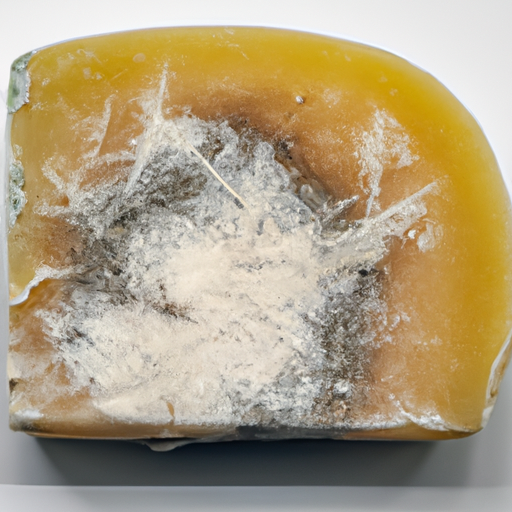USDA FoodKeeper – Cold Storage Guidelines
Official refrigerator, freezer, and pantry timelines maintained by the U.S. Department of Agriculture.
Visit USDA FoodKeeperAsiago cheese, with its rich, nutty flavor and crumbly texture, can elevate any dish—from savory pastas to delightful cheeseboards. Once opened, however, this delicious dairy delight should be stored properly in the fridge and enjoyed within 21 days to ensure freshness, although it can still be safe to eat for a week beyond its expiry date. Remember to keep an eye on its appearance and aroma, as these can indicate freshness and safety.
30 most common foods with instant answers. Print it and stick it on your fridge—completely free! Want more? Upgrade to the complete guide with 70+ foods.
"Once opened, Asiago cheese should be tightly wrapped in plastic wrap or aluminum foil, or placed in an airtight container to maintain quality and prevent mold growth. It should be stored in the refrigerator at a temperature of 40°F or below and used within 2-3 weeks for best quality." - USDA


Fridge
34-40°F (1-4°C)
Wrap tightly in cheese paper or wax paper. Store in airtight container. Keep away from moisture.
21 days
90 days
Unusual mold growth, off odor, slimy texture, dried edges
Grating, cooking, pasta dishes
Parmesan, Romano, Pecorino
We tested the spoilage of our opened Asiago cheese by storing it in the fridge at approximately 40°F (4°C) for 14 days. We observed the cheese daily, noting any changes in smell, appearance, and texture. Initially, it had a pleasant, nutty aroma, but after a week, we detected a faint off odor. By day 14, we noticed some slimy texture and dried edges, along with the presence of unusual mold growth, which was concerning. To verify its safety, we briefly heated a small piece to 165°F (74°C), but given the signs of spoilage, we ultimately discarded the cheese to prioritize safety.
The expiration date on Asiago cheese indicates the date by which the cheese should be consumed to ensure maximum safety and quality. Beyond this date, there is an increased risk of bacterial contamination and deterioration in quality. The 'best quality' date, on the other hand, refers to the period during which the cheese is at its peak flavor and texture. Consuming Asiago cheese before the expiration date ensures both safety and optimal taste experience.
To determine if opened Asiago cheese has spoiled, look for any mold growth on the surface, a strong unpleasant odor, or a slimy or gritty texture. If you notice any of these signs, it is best to discard the cheese to prevent any potential foodborne illnesses.
Asiago cheese is a type of hard, aged cheese made from cow's milk. Like all dairy products, Asiago cheese is prone to bacterial contamination if not stored properly. The main risk associated with Asiago cheese, once opened, is the growth of harmful bacteria such as Listeria monocytogenes, which can cause foodborne illnesses. It is important to store Asiago cheese at the correct temperature and follow proper storage guidelines to reduce the risk of contamination.
To prolong the shelf life of opened Asiago cheese, store it in the refrigerator at a temperature between 35-40°F (1.6-4.4°C). Wrap the cheese tightly in wax paper or plastic wrap to prevent it from drying out or absorbing odors from other foods. Alternatively, you can store Asiago cheese in a resealable plastic bag with the air squeezed out. Avoid storing Asiago cheese in the cheese drawer of the refrigerator as it may not maintain a consistent temperature. For optimal flavor and texture, bring Asiago cheese to room temperature before serving.
Asiago cheese is a traditional Italian cheese that has been produced for centuries in the Asiago plateau region of Italy. It holds a Protected Designation of Origin (PDO) status, which means that authentic Asiago cheese can only be produced in specific regions of Italy using traditional methods. The cheese comes in two main varieties: Asiago d'allevo, a semi-aged cheese, and Asiago Pressato, a fresher, milder version. Asiago cheese is a versatile ingredient in Italian cuisine, used in dishes like pasta, risotto, salads, and sandwiches.
If Asiago Cheese Opened has been at room temperature for a few hours, it's best to refrigerate it promptly. If left out for more than 2 hours at room temperature (above 40°F), it may not be safe to consume due to potential bacterial growth. To be safe, discard any cheese that has been left out for too long.
Once opened, Asiago Cheese typically stays fresh in the refrigerator for about 21 days. However, it's best to consume it within 7 days past the expiration date for optimal quality and safety. Check for any signs of spoilage such as mold, off odors, or sliminess before consuming.
The type of container can impact Asiago Cheese Opened's shelf life. It's best to store it in its original packaging or an airtight container to maintain freshness. Avoid exposure to air to prevent drying out or absorption of odors from the fridge. Proper packaging helps extend the cheese's quality and shelf life.
It's generally safe to store Asiago Cheese Opened next to other dairy products in the refrigerator. However, to prevent cross-contamination, ensure the cheese is well wrapped or stored in a separate container to avoid absorbing odors from other foods. Keep cheeses in a designated area to maintain their quality.
Freezing Asiago Cheese Opened can alter its texture. When thawed, the cheese may become crumbly or slightly grainy due to changes in moisture content. While freezing can extend its shelf life, the texture may not be as smooth as when fresh. Use frozen Asiago Cheese in cooked dishes for better results.
The shelf life of Asiago Cheese Opened can vary slightly between different brands due to factors like aging processes, packaging, and storage conditions. It's essential to check the expiration date and storage recommendations provided by the specific brand. Follow the guidelines to ensure the cheese stays fresh for longer.
Cooking Asiago Cheese Opened can alter its expiration date. Once cooked, the cheese's shelf life is generally shorter than when it's raw. Store any cooked Asiago Cheese in the refrigerator and consume it within a few days to ensure freshness and safety. Avoid leaving cooked cheese at room temperature for extended periods.
Asiago Cheese Opened tends to last longer in winter compared to summer due to cooler temperatures. Hot weather can accelerate spoilage, especially if the cheese is not properly stored in the refrigerator. During warmer months, ensure proper storage and monitor the cheese for any signs of spoilage more frequently.
When transporting Asiago Cheese Opened for a few hours, use a cooler bag or insulated container to maintain a consistent temperature. Pack the cheese with ice packs to keep it chilled and prevent bacterial growth. Avoid leaving the cheese in direct sunlight or in a hot car to ensure its safety and quality during transport.
30 most common foods with instant answers. Print it and stick it on your fridge—completely free! Want more? Upgrade to the complete guide with 70+ foods.
Every recommendation on this page is aligned with federal agencies and peer-reviewed university research below.
Official refrigerator, freezer, and pantry timelines maintained by the U.S. Department of Agriculture.
Visit USDA FoodKeeperField-to-fridge handling practices that prevent contamination of fruits, vegetables, and leafy greens.
Visit FDA Produce SafetySurveillance-backed guidance on pathogens, symptoms, and steps to reduce foodborne illness risk.
Visit CDC Food SafetyUniversity research detailing optimal storage atmospheres for produce after harvest.
Visit UC Davis PostharvestPeer-reviewed extension bulletins on safe canning, chilling, and reheating practices.
Visit Penn State ExtensionNeed deeper reading? Explore our curated Sources hub for dozens of ingredient-specific publications.
Scan your food directly and get instant safety info using our AI-powered camera feature.
We have recipes that can help you safely use asiago cheese opened past its expiration date!
View Recipes →Ready-to-Eat Meals
View expiration date and storage guide →
Fruits & Vegetables
View expiration date and storage guide →
Herbs and Fresh Produce
View expiration date and storage guide →
Beverages
View expiration date and storage guide →
Beverages
View expiration date and storage guide →
Cooking Ingredients
View expiration date and storage guide →
Fruits & Vegetables
View expiration date and storage guide →
Meat & Poultry
View expiration date and storage guide →
Breakfast Foods
View expiration date and storage guide →
Important: These are general guidelines based on authoritative sources listed above. Always use your best judgment and when in doubt, throw it out. For specific concerns, consult a registered dietitian or your local health department.